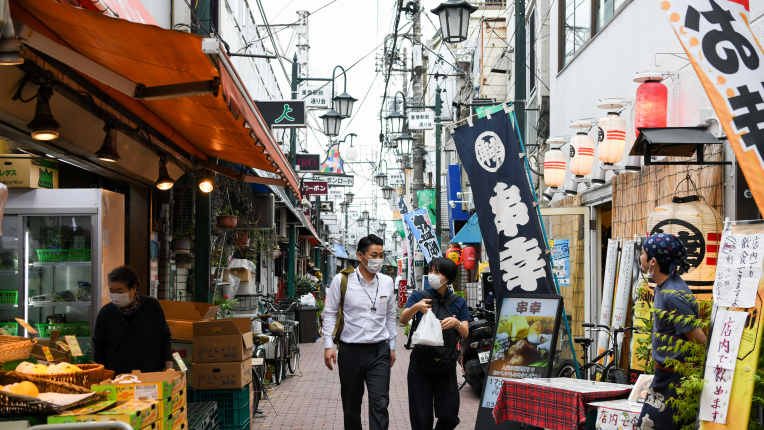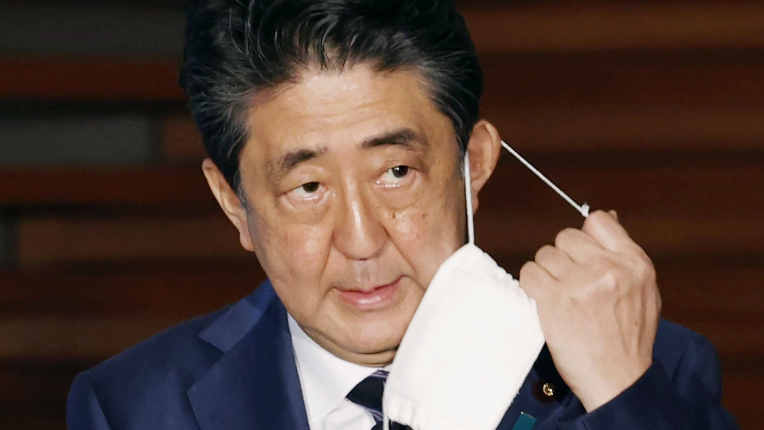Japan ends state of emergency, eyes fresh $1.5trn stimulus
by Air travel surges by 123pc! (Beware of misleading data like that.)Tokyo | Japan was on Monday poised to lift a state of emergency for Tokyo and remaining areas still facing restrictions, while the Nikkei reported a plan for new stimulus worth almost $US1 trillion ($1.5 trillion) to help companies ride out the coronavirus pandemic.
Social distancing curbs were loosened for most of the country on May 14 as new infections fell, but the government had kept Tokyo and four other prefectures under watch.

Japan's economy minister told reporters on Monday the government had received approval from key advisers to remove the state of emergency for all remaining regions. It would be the first time the country has been completely free from the state of emergency since it was first declared a month and a half ago.
"While the emergency state will be lifted, it is important to expand economic activity in stages as we establish a new way of living," Yasutoshi Nishimura said. He added that the head of the advisory panel had recommended close monitoring of Tokyo, Kanagawa and Hokkaido prefectures, where cases had fluctuated.
The world's third-largest economy has escaped an explosive outbreak, with some 17,000 infections and 825 deaths so far; however, the epidemic has tipped it into a recession and eroded Prime Minister Shinzo Abe's popularity to multi-year lows.
An Asahi newspaper poll conducted at the weekend showed Abe's support rate at 29 per cent - the lowest since he returned to power in late 2012 - and disapproval at 52 per cent. The results mirrored a Mainichi newspaper survey published on Saturday.
Abe was scheduled to hold a news conference at 6pm local time (7pm AEST) followed by a government task force meeting. The lifting of the state of emergency takes effect after the meeting.

Tokyo Governor Yuriko Koike had previously said the capital would move into "stage one" of loosening restrictions, once the state of emergency was removed. That would allow libraries and museums to reopen, and restaurants to stay open until later in the evening. Subsequent stages would see theatres, cinemas and fairgrounds reopen.
To support an economy on track for its deepest slump in postwar history, the government is considering fresh stimulus worth ¥100 trillion ($1.4 trillion), mostly comprising financial aid for companies, the Nikkei newspaper said.
The package, to be funded by a second supplementary budget, would follow a record ¥117 trillion spending plan deployed last month.
The combined stimulus would bring the total spending in response to the pandemic to about 40 per cent of Japan's gross domestic product.
The new package would include ¥60 trillion to expand loan programs that state-affiliated and private financial institutions offer to firms hit by virus, the Nikkei said. Another ¥27 trillion would be set aside for other aid including capital injections for ailing firms, the paper said.
The government is expected to approve the budget, which will also include subsidies to help companies pay rent and wages, at a cabinet meeting on Wednesday.
Japan's economy slipped into recession in the last quarter, and analysts expect another 22 per cent contraction in the current quarter.
The deepening pain from the pandemic is forcing the government to add to Japan's huge debt pile, which is already twice the size of its economy, to pay for big spending plans.
The Bank of Japan expanded monetary stimulus for the second straight month in April and pledged to buy as many bonds as needed to keep borrowing costs at zero.
Reuters